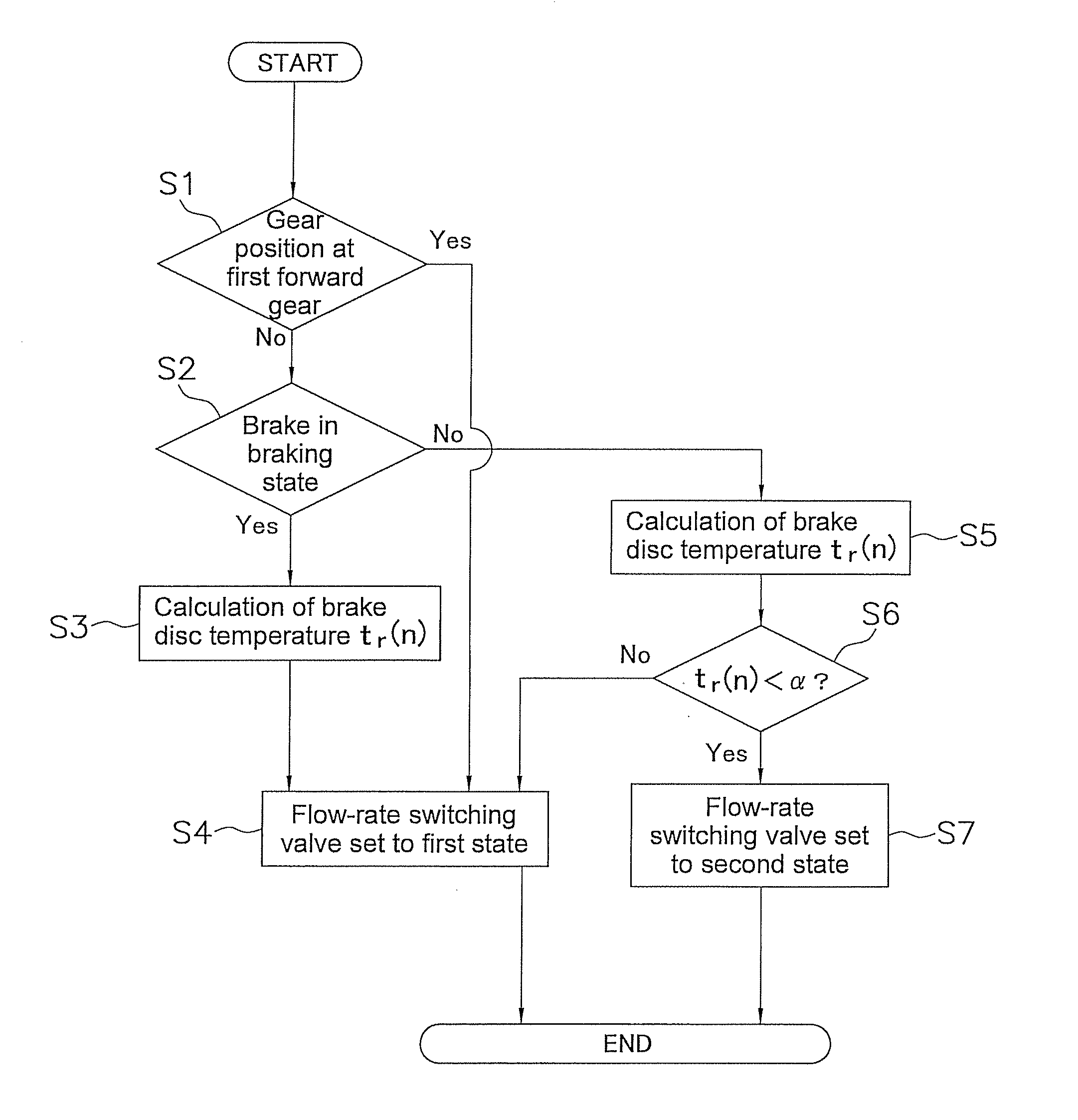Work vehicle and method for controlling work vehicle
a technology for working vehicles and work vehicles, applied in the direction of process and machine control, interengaging clutches, instruments, etc., can solve the problems of insufficient cooling of rotating parts, suppress the loss of driving force in the braking device, and reduce the incidence of overheating. , the effect of high cooling capacity
- Summary
- Abstract
- Description
- Claims
- Application Information
AI Technical Summary
Benefits of technology
Problems solved by technology
Method used
Image
Examples
first embodiment
[0032]FIG. 1 is a schematic system diagram of a work vehicle 1 according to a first embodiment of the present invention. The work vehicle 1 is, for example, a bulldozer, and comprises an engine 2; a power transmission mechanism 3; a pair of traveling devices 4a, 4b; a pair of braking devices 5a, 5b; a lubricant feeding section 6; a variety of operating sections 32 through 35; a variety of sensors 41 through 43; a controlling section 7; and other components.
Engine 2
[0033]The engine 2 is a diesel engine, the output of which is controlled by adjusting the amount of fuel injected from the fuel injection pump (not shown). Specifically, the engine speed and the amount of fuel injected are adjusted according to load so that the actual engine speed matches the engine speed set by the controlling section 7. A driving force from the engine 2 is distributed via a power takeoff device 8 to the power transmission mechanism 3 and a hydraulic pump 30 described below.
Power Transmission Mechanism 3
[...
second embodiment
[0087]In the aforementioned embodiment, a decision is made in the sixth step S6 as to whether the brake disc temperature tr(n) is smaller than a predetermined target temperature α; however, a lubricant feed time required for the brake disc temperature to decrease to a predetermined target temperature as a result of the lubricant being fed at the first feed amount may be calculated, and the amount of supplied lubricant reduced from the first feed amount to the second feed amount when the lubricant feed time has elapsed from a point in time when the braking device 5a, 5b is switched from a braking state to a non-braking state. For example, in FIG. 4, a time period corresponding to a period T13 is calculated as the lubricant feed time, and the amount of supplied lubricant is reduced from the first feed amount Q1 to the second feed amount Q2 when the lubricant feed time (T13) has elapsed from the point in time when a period T12 ends (shown by P1 in FIG. 4). In such an instance, the lubr...
third embodiment
[0089]In the aforementioned embodiment, a decision is made in the first step S1 as to whether the gear position of the transmission 10 is the first forward gear, and in an instance where the gear position of the transmission 10 is the first forward gear, the first control is not executed, and the second control is executed. However, the following decision may be made instead of, or in addition to, the aforementioned decision.
[0090]A decision may be made as to whether the rotating speed of the brake discs 20 exceeds a predetermined value, and the first control is made to be executable when the rotating speed of the brake discs 20 exceeds the predetermined value, while the second control is made to be executable when the rotating speed is equal to or less than the predetermined value.
[0091]In such an instance, the first control is made to be executable when a large suppressing effect on the driving force is exhibited in the braking device 5a, 5b; whereas the first control is not execu...
PUM
 Login to View More
Login to View More Abstract
Description
Claims
Application Information
 Login to View More
Login to View More - R&D
- Intellectual Property
- Life Sciences
- Materials
- Tech Scout
- Unparalleled Data Quality
- Higher Quality Content
- 60% Fewer Hallucinations
Browse by: Latest US Patents, China's latest patents, Technical Efficacy Thesaurus, Application Domain, Technology Topic, Popular Technical Reports.
© 2025 PatSnap. All rights reserved.Legal|Privacy policy|Modern Slavery Act Transparency Statement|Sitemap|About US| Contact US: help@patsnap.com



